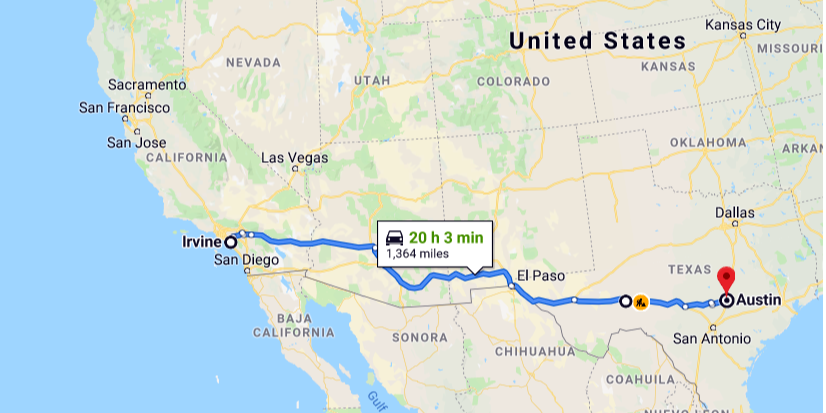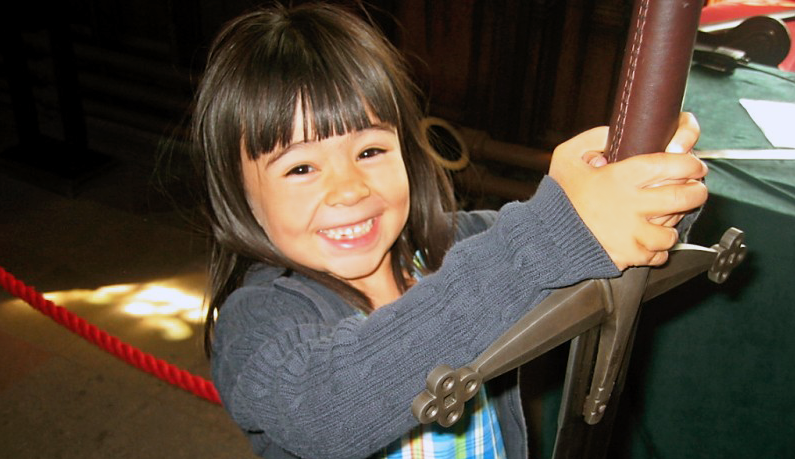
It was a busy summer. We’d taken our first overseas vacation. We moved from California to Texas, spending three days in the car with just enough belongings to start our household before the moving truck arrived several days later. We arrived in Austin in time for our daughter to experience her first summer T-storm where the air is warm, but it's pouring rain—quite a phenomenon to a six-year-old from Southern California.

My daughter was excited and nervous about starting first grade in a new school. She came home from that first day thrilled about her teacher, Miss Reneau, and her classmates, but frustrated that she’d had some challenges remembering how to do things she knew she’d learned in kindergarten.
Ten years later, I don’t recall what those things were, but I do remember noticing effects of the “summer slide” as I looked over the work she brought home, and in the little homework assignments she had those first few weeks of school. I knew then that it would take effort to keep her both in the habit of school, and help her retain what she’d learned during the summer months.

That particular “summer slide” wasn’t terrible; we’d read plenty of books together, and had all kinds of conversations about the things we experienced together. There are 528 steps in St Paul’s Cathedral. Custard has different ingredients than ice cream, but it’s still sold in a cone at the bottom of those 528 steps. Scottish broadswords are longer than she was tall, and the Mons Meg cannon could fire cannon balls that weighed 400 pounds! There are 1,364 miles, and two whole other states (our route took us through Arizona and New Mexico) between Orange County, CA and Austin, TX, and it was only a half-mile walk from our new home to her new school.
Having these sorts of discussions with our kids, and answering their endless “why” questions is one way that we can support their learning, their curiosity, and intrinsic motivation to continue learning. These discussions don’t require extra planning, or preparation, they just require attention and focused listening. They also don’t require any special destination. I remember curious conversations about tomato worms (hornworms), because they looked like the plant they were eating. There is curious stuff all around us.
Curiosity doesn’t have to slip away as our kids grow older. My daughter recently shared alarming statistics on corporate farming that she’d uncovered for a presentation in her English class. Once she finishes her final exams, I’ll share an article I found on the difference one person can make with some good research, and a strong message focused on the right recipients. I also know she intends to spend many summer hours at the beach where I hope she’ll learn to read and ride the waves, and check out all the creatures living in the rocks along the jetty.
Some school work habits are harder to maintain over the summer. Summer is for fun and for downtime, especially unplanned, unorganized, unscheduled fun.
But having been a teacher, been raised by a teacher, having siblings who are teachers, and conducting research with teachers and students, I do know that kids who have to spend time ramping back up, can fall quickly behind come September.
What I found though, after that summer between kindergarten and first grade, is that it doesn’t take much for kids to keep their work habits in gear for an easy back to school transition. We had a fair-trade rule in our house. Extra screen time was traded for extra book time. Play Wii or a game on mom’s phone for 20 minutes, read for 20 more minutes. Watch a 30-minute TV show, read for 30 minutes.

We also had summer “homework” folders. At the completion of each homework folder was a little treat—a visit to a favorite park, a yummy sweet, or a special activity with mama. These folders had tasks in them appropriate to her age. She might play Yahtzee to practice her multiplication skills, or bake to work on her fraction skills. When she struggled with reading comprehension, she had to find things she was interested in to read about, and then tell her dad or I about them.
A visit to a discovery center sparked an interest in electricity and how it was made, how it made its way into our house, and how it was used by the things in our house. After limitless “how” and “why” questions—the answers to which were waaaaaay beyond our knowledge, and honestly, even our interest—my husband and I decided that her summer homework would be to answer her own questions and share her discoveries with us.
One summer she became super interested in photography, so she learned about light and shadow, and how to put together a concise, interesting PowerPoint presentation—a skill necessary to those next few years of school and beyond.
Some years, she continued working in a workbook or writing journal that came home on the last day of school with pages yet unfilled. Some years she read every book in a series she loved. Always there were conversations about what she was learning—even what she learned from reading fictional stories about fantastic characters. In recent years, she’s shared some of her favorite books with me, and we’ve had engaging discussions about choices the characters made, or the societal wrongs in the story.
Through the years, my small efforts to thwart the summer slide have become wonderful relationship builders with my kid. I have a teenager and we get along. We don’t always agree, but we can discuss, negotiate, strategize, and solve together.
By attending to, and encouraging her problem-solving abilities early on, we’ve given her tools she needs to navigate the pitfalls and pathways of being an American teenager.
My daughter spent time in three elementary schools between kindergarten and 5th grade. Unfortunately, none of these, nor her middle school, used ST Math. In fact, she was in high school before I learned about MIND Research Institute and ST Math. As MIND Research Institute supports the 1.2M+ students who have ST Math accounts, we remind teachers to turn on access to all content so kids can continue to play over the summer months.
I can’t help but think how much fun it would have been for my daughter to play ST Math games as one of her “homework folder” tasks. I know it would have deepened her problem-solving skills and her persistence (though that could’ve been a double-edged sword as persistence is not something she lacks!). Maybe the fun activity with mama would have been for mama to try to figure out the challenge games my daughter beat!
Teachers, please turn on all content so your students can continue to play ST Math in the summer months.
Parents, consider checking with your kids’ teachers to make sure they have summer access.
Wishing you all a fun, MINDful, and curious summer!
Comment